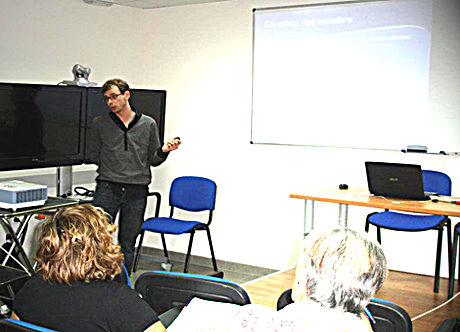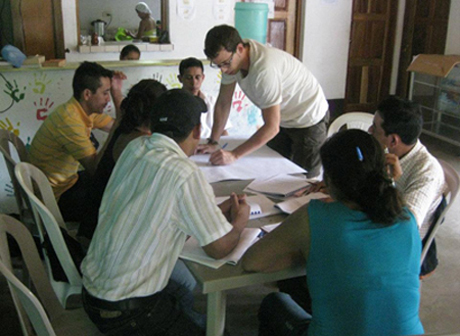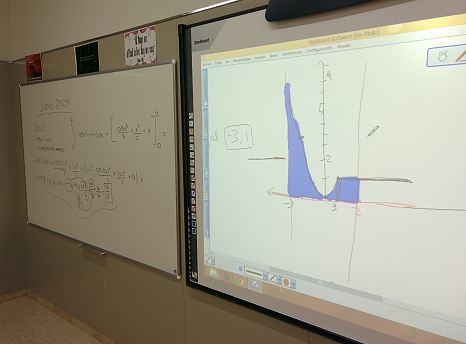Many overgraduate students in Spain have applied during the last 4 years to a new kind of student loan, called
ICO Renta Universidad, in order to complete their studies with a Master's Degree. This is pretty new in the Spanish system, despite being very common in other Western countries, specially in the UK and the USA. In this particular case the loan had quite favourable conditions: a 3 years grace period (up to 6 years, under certain circumstances), a 0% interest rate and 10 years to be repaid.
Some of my fellow friends, who meet the conditions to defer either one or their first three years of payments, have asked me whether it would be better to do so or not. Of course there is not a general answer for that, because each one of them would have different current situations and, more determinant, future expectations of income and, besides, there are some other uncertainties such as the internal devaluation in Spain, the labour market dynamics and the prospects of inflation. Thus I give NO advice. Nevertheless it tourned out to be a nice sample to explain how financial maths work. I'll take a made-up case study and I'll do some assumptions about unknown variables: I'll suppose Spain keeps up within the euro -nobody knows what could happen with these loans otherwise- and inflation will be low, but not negative*. I'll take inflation rate in a 2%, which is commonly accepted as the usual target for central banks and quite consistent with a depressed economy with an extremely high unemployment**. Finally, I'll take a 15.600€ loan, amount very frequently applied for, since it was the maximum amount for a one-year master's degree.
The three options they face are:
A) Regular payment. Starting in the year t to t+9 and paying 130€ monthly:
130 (€/month) *120 (months in ten years) = 15600€.
B) Defer one year. Starting in the year t+1, paying 130€ monthly every year up to t+8, and 260 €/month the last year, t+9:
130*96 + 260*12 = 15600€.
C) Defer three years. Starting in the year t+3, paying 130€ monthly the first four years and 260€ monthly the last three years:
130*48 + 260*36 = 15600€.
By all means it's the same NOMINAL amount because it is a 0% interest-rated loan. Does it mean that they are just indifferent? Absolutely not. Here is where inflation shows up:
the same nominal money today is not worth the same 10 years afterwards -in terms of the goods and services you could buy with it. As most of us can intuitively deduce that means that, provided we face
any positive inflation and with a 0% rate, it would be better to delay the payment as long as possible but, how much benefit would we take of that strategy? As I said, it depends on the
actual inflation rate which we can't know beforehand, but supposing this 2% average inflation rate for the whole period and that it keeps constant during the period -this is a strong condition but it allows us to calculate and it's impossible to foresee any trend in advance. You should take it as an
average- the figures would be:
B) 130*12/(1+0.02)^9 = 1560/1.195 = 1305.34.
It is to say, the money we don't pay in the year t and we pay in the year t+9 is worth 1305.34 in terms of real (year t based) money. 1560-1305.34 = 254.66€, or a 19.5% saving of one-year's part of the total credit for that deferred year (therefore for a 1/10 of the total amount, an extra overall saving of 1.95%).
C) 130*36/(1+0.02)^7 = 4680/1.1487 = 4074.22.
In this case the money we don't pay in the years t, t+1 and t+2 and we pay in the years t+7, t+8 and t+9 respectively, is worth 4074.22 in real money (years t, t+1 and t+2 based) instead of the nominal 4680. So far, so good. Now if we want to put them all in the same base-year (we should!) we need to financially move the gaining of the years t+1 and t+2 to the year t (that's called discounting when it's backwards and capitalizing when it's forwards) -> for t+1: (4074.22/3)/1.02 = 1331.44; for t+2: (4074.22/3)/(1.02^2)= 1305.33. And for the year t the deferred payment was worth 1358.07 (No extra calculations needed, it's already expressed on the base year). If we consider the nominal payment was 1560 every year we have: 1560*3 - (1358.07+1331.44+1305.33) = 4680- 3994.84 = 685.16€ That's the overall gain of the option C expressed in real terms, taking t as the base year. It means an extra 4.4% overall saving.
I keep saying an extra gaining. Why? Because either way or even not delaying any payment we are already benefiting from the 0% interest rate, provided any positive inflation, and we are, therefore receiving a covered transfer from the government or the bank, whoever is covering the rates -I guess it must be the government, banks are not known by their philanthropic approach to lending. We could, for instance, calculate what's been the actual gain of the grace period for the first payment year, because we know the actual inflation 2.989% (2010), 2.377% (2011) and 2.868% (2012). Supposing someone who had the loan approved on the 1st January 2009, the grace period has supposed, so far: 1560 / (1.02989)(1.02377)(1.02868) = 1560/1.0846 = 1438.31. -> 1560-1438.31=121.69€ (year t based) or 8.46% saving for the first year of payments. In conclusion, the money he or she asked to finish the studies has received a sort of 8.5% grant, so far (for the next years we'll need to multiply this discount factor by (1+i)^t+n, being i= real inflation and n= number of years). Obviously this "implicit grant" will be higher as times goes by, provided positive inflation (for the 13th year, taking a 2% average inflation rate it would be 1.02^13 = 1.2936 -> a 29.36% "implicit grant": the 1560€ you have to pay then would be worth roughly a 30% less in real money than when you got them, given this inflation rate). The higher real inflation during the period the higher implicit grant you get, and vice versa. Whether it is fair or not has nothing to do with financial maths (although I can't help saying that I'd rather go for a public and affordable -ideally free- university system and a proper grant scheme for the poor, which allows everyone to get the education they want, regardless of their current or future income and their lower or higher opportunity costs. But this is another story).
I have only exposed the differential figures between option A and option B and C, which was the relevant information to make a decision in this case. Thereby year t is the year you start to pay the loan and not the year you received it, which would be the proper "year zero" to know the total amount of the implicit grant. It is indeed interesting to calculate the global gaining of the loan -to know which percent of it is a sort of implicit transfer- and if you feel curious, given a 2% inflation rate it would be roughly a 19-23% depending on the payment option you choose, and in our study case it would represent an implicit grant of 3.000€ to 3.800€, but we can't infere the actual inflation rate and such long term predictions are rather unreliable. We know, however, that given any positive inflation we'll have this implicit grant and that the higher inflation the higher grant. Now we just need to patiently wait until 2023 to check which the actual grant will have been***.
So, in conclusion, the decision about paying now or delaying the payments depends, as I said at the beginning, on unknown factors such as the prospects of inflation, the risk aversion of the lenders and their future employability and/or other income resources. The figures are based on crucial and strong assumptions, specially referring to inflation, but it may be worth and it's always interesting to take a look to what numbers have to say.
*deflation is a real danger, though, if the crisis carries on for very long, Germany is still sickly obsessed with inflation and/or more bubbles burst, but this is another point (macroeconomics and economy policy issues) and one of the reasons I DON'T give any advice.
** It is true that inflation in Spain had been traditionally high and we have quite a dysfunctional economy able to sustain high unemployment and high inflation at the same time (a phenomenon known as stagflation) but the amazingly huge unemployment suggests it won't be the case the following years: before the crisis
it reached an average 3% and the last 3 years it's been constantly over 2% (2.99%, 2.37% and 2.87%), while at 2008 and 2009 it was only 1.4% and 0.8%. The slowdown of global markets, the decreasing GNP, the still overpriced housing sector and, specially, the unbearable 26% unemployment rate suggest it won't raise any more than 2%. Finally, I've taken into account that the loan is for a total 13 years and, hopefully, the depressed conditions won't last that long, so considering
deflation for the next 13 years seems just unreasonable. A 2% will do.
*** And I found a way of writing a future perfect somewhere ;)

























